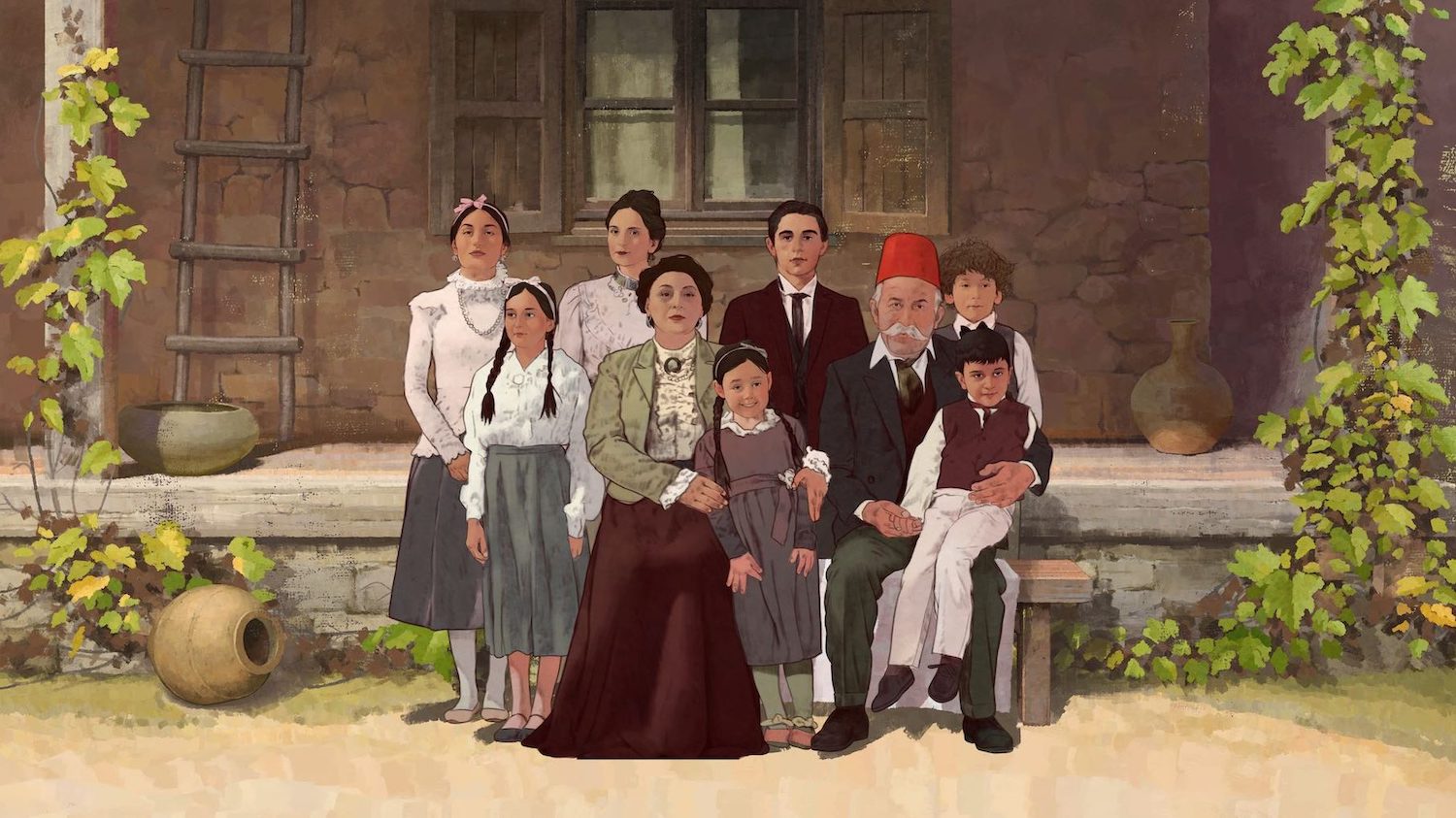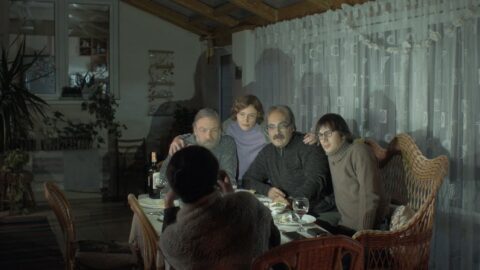To get to goEast, I travelled west through the flatlands of middle Germany on a smooth and frictionless FlixTrain. After four hours I landed in Frankfurt Süd, took a tram to Hauptbahnhof and boarded a windy S-Bahn across endless allotments, the muddy river Main and huge corporate buildings. Just forty minutes west of Germany’s biggest economic hub — and most depressing city — Wiesbaden feels like a different world. It feels like a place you can… slow… down.
With impressive Romanesque buildings, hot water springs, small yet charming parks, Italian restaurants and Irish pubs, and fancy boutique shops, it feels like the perfect city to lose yourself in for a few days. I stopped for a beer and sat outside in the sun while waiting for hotel check-in to open. A man asked me where my clip-on sunglasses were from (Rome). A small conversation, sure, but the kind of thing that doesn’t happen in Berlin. We’re in small-city Germany now.
With so much to see and do — Mainz just across the state border; a casino that inspired Dostoevsky’s The Gambler; places where Elvis took Priscilla on dates — it’s almost a shame I’m here to watch movies. The good news is that in just its first two competition entries, goEast, dedicated to Eastern and Central European cinema, already feels like a festival with a strongly defined point of view.
goHybrid
Hybrids are all the rage. Documentarians love to say: “It’s not a documentary really, it’s more of a hybrid.” And festivals love to program them. Some festivals, like Visions du Réel, even have entire programmes entirely dedicated to them. It makes sense: on the lookout for new cinematic forms, hybrids offer a bit of fiction, a bit of reality, and a bit of something intangible in-between. Many documentaries, especially those based on a true story, can feel a little predictable: a hybrid can be whatever you want it to be. They sound sexy, their lack of real definition — I’d say that most people are not exactly sure what anyone means by this term — giving them a certain exotic nature.
Given the elasticity of the term, I’m going to go ahead and label both films I watched on my first day as hybrids in one sense or another. Far different in content and style, their willingness to mix and match forms — playing around with the capabilities of documentary-and-fiction-filmmaking to “portray” or “complicate” truth — made for a fascinating start to the festival.

Animating Atrocities
I’m glad that competition entry and opening film Aurora’s Sunrise (Inna Sahakyan, 2022, above) was an animated film. In many ways, this sobering documentary could’ve only worked as an animation. Live-action would’ve been far too punishing.
In 1919, Arshaluys Mardiganian, better known by her Americanised name Aurora, wrote and starred in the silent classic Auction of Souls (Oscar Apfel), depicting the Armenian people’s ravishment at the hands of the Ottoman Empire. Charging $10 ($174 today) a seat back when admission prices were around $0.35, the film raised millions of dollars for Armenian relief efforts after the devastating genocide.
The film was subsequently lost, with only 20 minutes currently remaining. Sahakyan weaves together elements from the remaining footage with an in-depth 90s interview with Mardiganian. But rather than simply remaking Auction of Souls as an animated film, the images and narration seek to go deeper into Mardiganian’s story, spanning from surviving genocide to her escape and newfound fame in America.
It joins Flee (Jonas Poher Rasmussen, 2021) and Waltz With Bashir (Ari Forman, 2008) as yet another near-East set tale of war and displacement that uses animation as a means to explore things live-action simply can’t. But the animation style here is radically different, and at times, rather jarring.
While the backgrounds are seemingly painted in a gorgeous, impressionist style — featuring soft, rolling mountains and keenly rendered cityscapes — it clashes with the sharp, yet often blurred-in-motion, rotoscoped character design. Additionally, watching characters’ eyes move while the body stays still or awkwardly bobs up and down like a dashboard toy dog, reminded me of the title credits of a Monty Python film.
While close-ups of Mardiganian in real life give a sense of the enormous trauma this woman survived, the animated faces here lack the subtlety of emotion such an important tale needs. This isn’t helped by the almost-constant narration, constantly humming and thrumming musical score, and an overall sense of busyness. We are spared none of the horrors of Turkish (and sometimes Kurdish) atrocities, but I felt like Aurora’s Sunrise would be more effective if it lingered more on the psychology of its heroine, especially as she is tasked with both re-enacting those horrors in a fictionalised version of her life and during a whistle-stop tour of the USA.
Aesthetic considerations inside, the film certainly works as advocacy. Only 23 countries, not including my home countries, Ireland and the UK, recognise the Armenian genocide, which killed between 500,000-1,500,000 people. Given ongoing tensions with Azerbaijan, who re-invaded the autonomous Armenian region of Nogorno-Karabakh just three years ago with Turkish-made weapons, it seems like its lessons are still yet to be learned. But they must be if a permanent peace has any chance of flourishing in the region.
God be with any intrepid Turkish programmer who tries to slip it into one of their festivals. They should.
A DV Riddle
Reconstructions of a remarkably different kind characterise La Palisiada (Philip Sotnychenko, 2023, feature and above), a riddle wrapped in an enigma trapped in a Houdini box at the bottom of the ocean. Deciphering this film is probably nigh-on impossible. Enjoying it, on the other hand, was remarkably easy.
I’m glad I watched The Asthenic Syndrome (1989, Kira Muratova) just a couple of weeks back. It steeled me for the structural gambits and aesthetic ambition of debut director Sotnychenko’s similarly messy evocation of Ukrainian life in the wake of a changing nation. Like Muratova’s film, it starts with one movie before rapidly shifting to another.
The opening film is a marvel all by itself. We start with obfuscation — the camera shooting through an unclean window, the image slightly blurred — and proceed with more obfuscation, a young man, Kirill (director Yarema Malashchuk) talking cryptically about a missed train on the phone. The camera endlessly pans around the apartment, taking in the unkempt walls, furniture covered in film and various other bric-a-brac. Next a party scene; the nervous handheld camera surveying several conversations in tandem.
Kirill’s girlfriend is an artist in Odessa. She has a contemporary exhibition, attended by none of her family. They later have dinner together, caught with Mike Leigh-style naturalism, her father constantly one-upping the young man about his recent trip to Florence. Dad boasts about a long-ago trip to a rare Florentine Ukrainian restaurant, where the young girl boldly claimed that her father made better Borscht. Or did she?
As this bizarre prologue is finished off in a startling act of violence, we never find out the truth about this anecdote, setting the stage for a film that aims to frustrate at every single turn. Some people will find it incredibly annoying. I found it totally fascinating.
The second, far-longer section, is set completely in 1996, just a few months before Ukraine signed protocol number six to abolish the death penalty (now only technically legal throughout Europe in Belarus, if you don’t count current Russian-led atrocities). Perhaps more than any other contemporary film, La Palisiada, shooting the rest of the movie on VHS, perfectly nails down its 90s feel. Looking like a lost series of home videos, the cinematography, utilising long, slow, meditative, constantly moving takes, immerses us into a world where nothing is what it seems, including the nonsensical title.
Detective Ildar (Novruz Hikmet) is investigating the murder of a police colonel in Western Ukraine. Almost immediately, they appear to have a suspect, a mentally challenged man asked by a psychiatrist if he knows the year of Ukraine’s independence. But other men are thrown into the mix too, an endless procession of tracksuit-wearing, bald men, captured by the police, thrown onto the floor, and threatened with guns, caught in a long, endurance-testing take.
At times, it feels like the director is just showing off his flair for multi-beat, complex blocking — often repeating the same type of shot over and over again — yet it adds to a sense of rigorous, purposefully enforced unease; especially as we consider that the true solution could be over the next horizon, or past another obfuscated view. Often, these shots are revealed to be the work of a cameraman himself, the line between reality and fiction expertly blurred. Characters sometimes look into the camera, only for the scene to cut to the next episode; probing the limits of what video can capture, and how the truth can be edited out.
What I found frustrating is the mixture of shot types here. There’s certainly a level of aesthetic ambition here — a flair for the epic, including a long funeral march and markets operating on the train tracks — but I felt they should’ve kept to handheld throughout in order to keep the viewer on their toes as to whether what we are watching is the film-within-the-film or not. Switches to smooth tripod or dolly takes often took me out of an otherwise carefully rendered feeling.
To add to a general sense of confusion, the only witness is a mute woman, whose testimony is often deliberately misinterpreted by her translator. Detectives watch and rewatch their own re-enactments, their reflection caught on the television as the video cuts to black. But for some reason, they cannot see their own corruption — a hangover of imperialism, a curse on independent Ukraine.
One key switch to the Russian language, references to Crimea and a grisly execution with parallels to the current war of aggression suggest that independent Ukraine — still one of the most corrupt countries in Europe by any measure of the term — still has a long way to go to rid itself of the shackles of the Soviet Union.
In the meanwhile, they have directors like Sotnychenko honing what can only be described as a uniquely Ukrainian aesthetic. This is my kind of hybrid film.
Redmond is the editor-in-chief of Journey Into Cinema.

